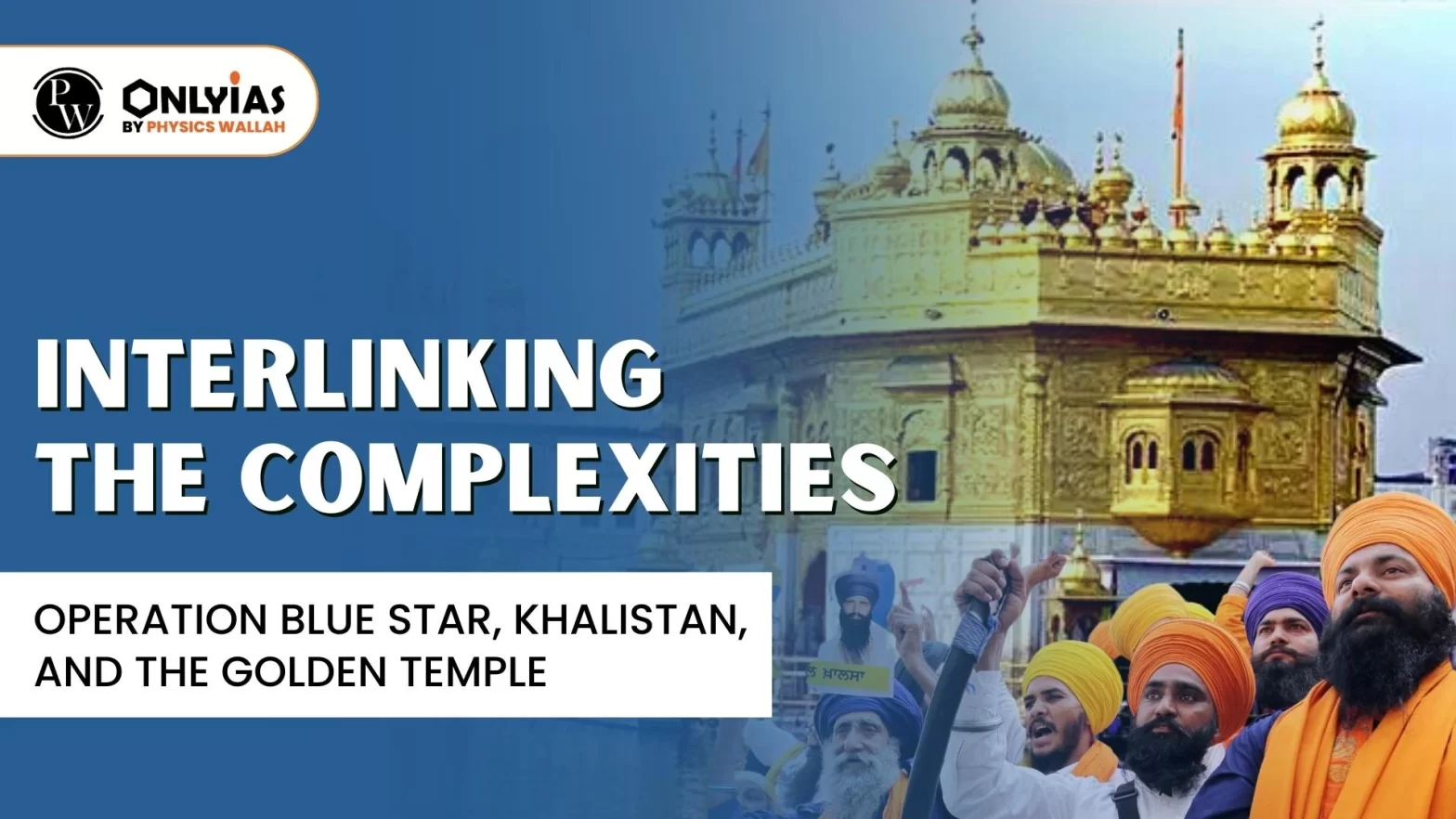Context: October 31st marks the 39th death Anniversary of the former Prime Minister of India Mrs. Indira Gandhi.

Golden Temple: A Spiritual Haven and Architectural Marvel in Amritsar
|
National Security Guard
|
|---|

| Before Independence |
|
| After independence |
|
| Intensification of movement | Although the above events have sown the seeds of Khalistan, the Khalistan movement was intensified by the following events:
|
| Must Read | |
| NCERT Notes For UPSC | UPSC Daily Current Affairs |
| UPSC Blogs | UPSC Daily Editorials |
| Daily Current Affairs Quiz | Daily Main Answer Writing |
| UPSC Mains Previous Year Papers | UPSC Test Series 2024 |
Operation Blue Star was an Indian military operation conducted in 1984 to remove militants, led by Jarnail Singh Bhindranwale, from the Golden Temple complex in Amritsar, Punjab.
Jarnail Singh Bhindranwale was a Sikh preacher and leader who played a significant role in the Khalistan movement, advocating for a separate Sikh state.
Operation Blue Star was controversial because it led to civilian casualties and damage to a revered religious site, sparking anger and resentment among Sikhs.
After the operation, there were violent riots, especially in 1984, targeting Sikhs. The violence continued, leading to ongoing conflict between militants and the government into the 1990s.
Indira Gandhi was the Prime Minister of India who was assassinated in 1984 by her Sikh bodyguards in retaliation for Operation Blue Star, which they perceived as an attack on their community.
The Golden Temple, or Sri Harmandir Sahib, is a revered Sikh religious site in Amritsar, Punjab, founded in 1574. It holds the Guru Granth Sahib, the Sikh scripture.
The NSG is a counter-terrorism unit established in 1986 to combat terrorist activities. It was formed in response to incidents like Operation Blue Star and other attacks on India's security.
The Khalistan movement emerged due to the partition of India and the division of Punjab, leading to a sense of loss among Sikhs and demands for a separate Sikh state.
In response to autonomy demands, Punjab was divided in 1966 into Hindi-speaking Himachal Pradesh, Hindu-majority Haryana, and Punjabi-speaking, Sikh-majority Punjab.
Major General Shahbeg Singh, though dismissed from the army, provided military training to Bhindranwale's followers and played a role in fortifying the Golden Temple complex during Operation Blue Star.

<div class="new-fform">
</div>